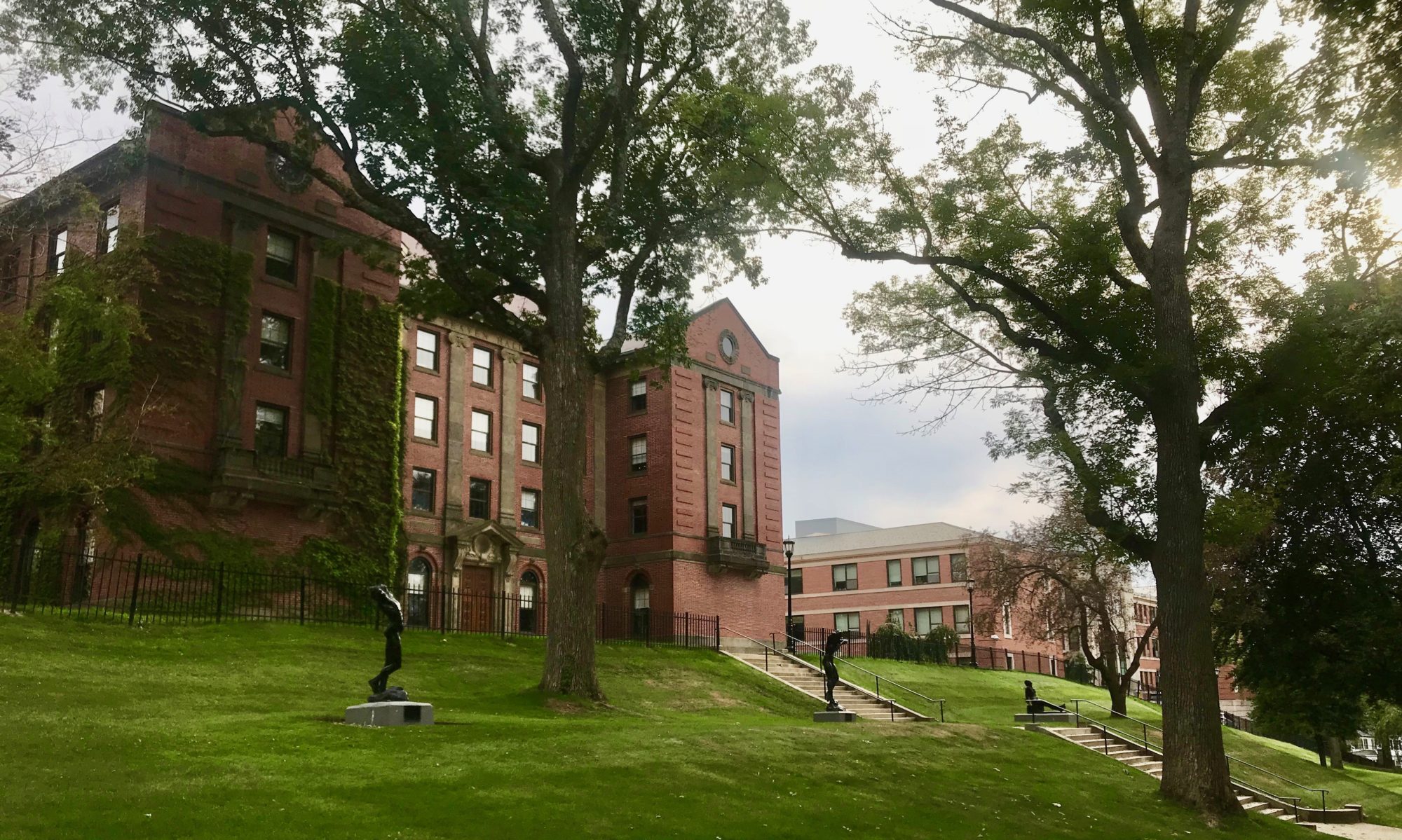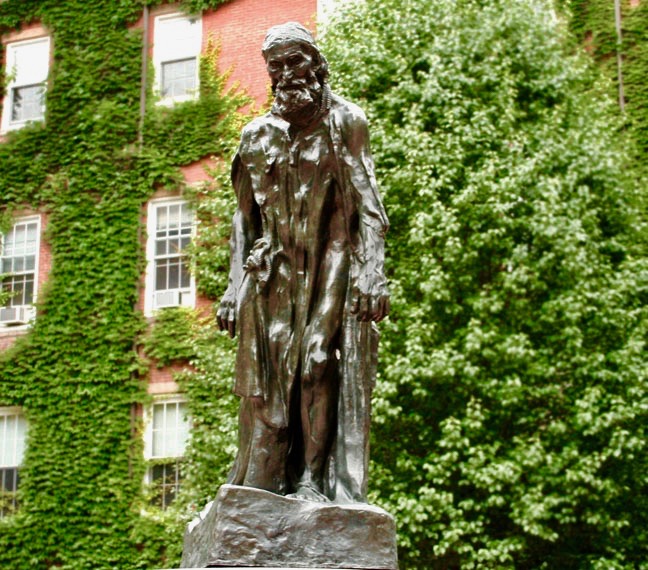
Located in Memorial Plaza, Eustache de Saint-Pierre was created by French sculptor Auguste Rodin, often regarded as the father of modern sculpture, and author of well-known works like The Thinker and The Kiss. Highly successful during his own lifetime, Rodin was known for his revolutionary approach to sculpture; his compositions often reference the physical properties of the materials from which they were made, including bronze, plaster, and marble. Eustache was part of a sculptural group known as the Burghers of Calais, commissioned in 1884 by the city of Calais, France to commemorate events that occurred during the Hundred Years’ War (1337 to 1453). The sculpture is one of 11 of Rodin’s sculptures owned by the College, given by Iris and B. Gerald Cantor, who, at the same time, created an endowment fund to support the Cantor Gallery.
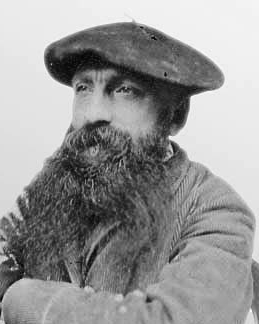
To create the composition for the sculpture, Rodin relied on the medieval chronicler Jean de Froissart, who tells of the besiegement of Calais in 1346 by the English, who demanded hostages in exchange for the French city’s freedom. Led by Eustache de Saint-Pierre, six calaisiens submitted themselves for execution, and were brought before the English king Edward III (1312 – 1377). Although Edward ordered their beheading, the burghers were saved through the intervention of the Queen, Philippa of Hainault. Regardless, their sacrifice was hailed as an exemplum of civic virtue in the late-nineteenth century by the municipal council of Calais. In 1885, they commissioned Rodin to memorialize it in a monument. The complex arrangement of figures was unveiled in Calais in 1895.
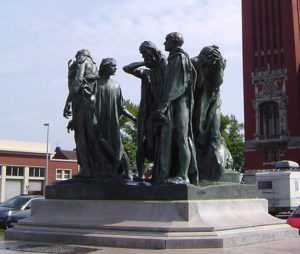
Like many of the Rodin sculptures in the Cantor’s collection, the Holy Cross Eustache was cast in bronze by the Coubertin foundry, created posthumously from the plaster model in the Musée Rodin in Paris, through a process created by Rodin himself. Though the Holy Cross Eustache was cast in the 1970s, the sculpture comes with a certificate of authenticity from the Musée Rodin – the institution created by the sculptor that controls and limits the number of casts of each sculpture to 12, in order to preserve the quality, and thus the value of the works.
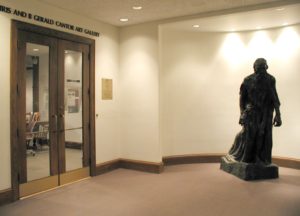
Although separated from his 5 comrades, The Cantor’s Eustache strikes a monumental figure. With his bowed head and anachronistic drapery, Eustache is meant to represent the broader ideals of sacrifice and patriotic heroism. When it first arrived at the College in 1985, the sculpture was installed in the foyer outside of the Cantor Gallery – the object’s weight required the floor to be reinforced in that spot! In 2003, after 2 decades in O’Kane, the sculpture was moved to the Memorial courtyard where it stands today. Its presentation as a fountain dedicated to Frank Vellaccio was conceived and funded by Carol and Park B. Smith, who wanted to recognize Vellaccio’s service to the College; as Professor of Chemistry from 1974, Dean of the College, and acting President from 1998 – 2000. Weighing more than 600 pounds, moving the sculpture was no small endeavor. Now exposed to the outdoor elements of rain and snow, the sculpture requires periodic care and surface treatments to protect it from environmental effects.
